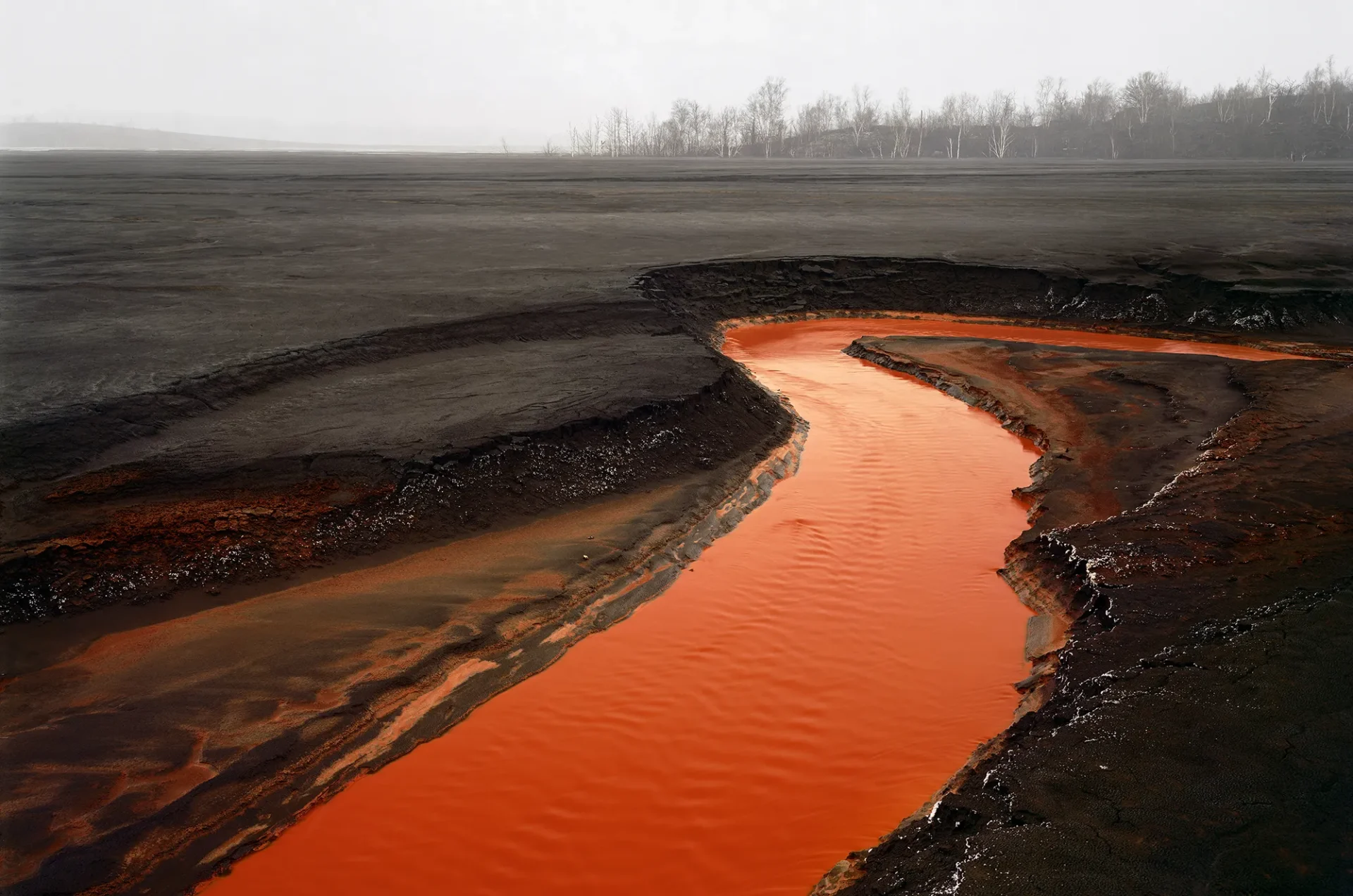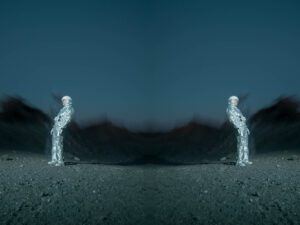The 1950s was a period of global transformation. Populations grew, infrastructure boomed and the consumption of energy reached new heights. It was the dawn of a new age, and the beginning of what scientists would call the “Great Acceleration.” The post-WWII era brought vast changes for humanity – more convenience, frequent foreign travel, a boom in technological advancements – but also pushed the climate into uncharted territory. Greenhouse gas emissions rose rapidly, and resource consumption reached new levels, causing unprecedented environmental changes. Many scientists argue that the mark humanity has left on the planet is now too great to ever be reversible.
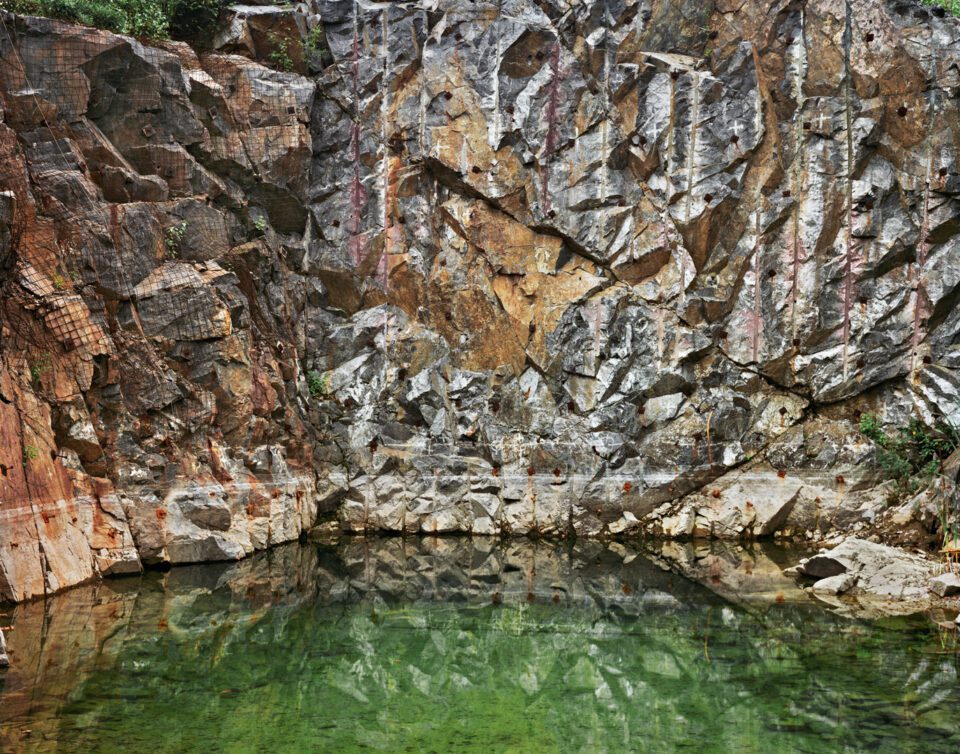
The International Center of Photography’s latest exhibition takes its name from the concept. The Great Acceleration presents the work of Edward Burtynsky (b. 1955), a photographer who is almost unparalleled in his contribution to environmental art and activism. His works, as he describes, “function as reflecting pools of our times.” Burtynsky seeks out industrial landscapes, capturing mines, quarries and recycling plants that are often hidden from public view. They are a visual representation of modern existence: humanity is entirely reliant on natural resources, whilst destroying the environment in processes of extraction and formation. ICP’s retrospective features more than 70 photographs, including many of landmark images that have never been exhibited before. The works reveals the depth of the artist’s investigation into humanity’s relationship with nature, showing it’s fragility and enduring beauty.

The exhibition’s scope is awe-inspiring. Burtynsky has visited more than 20 countries since he began working in the 1980s, however the show begins in Canada. The artist started his career working in factories, after being trained as a tool and die maker – a highly skilled tradesperson who designs, builds, repairs and maintains the machinery in manufacturing processes. Early inspiration came from these experiences. In particular, Ontario’s General Motors site, a 10 million-square-feet car assembly plant, ignited a fascination with how industry transforms the planet. It is a focus that defined his career. He described the process of making his earliest series in a 2018 interview with CNN as just “me and my car and my camera,” photographing railway lines and coalmines in Western Canada. Burtynsky soon ventured further afield, documenting an open-pit copper mine near Salt Lake City, USA, as part of the same series.
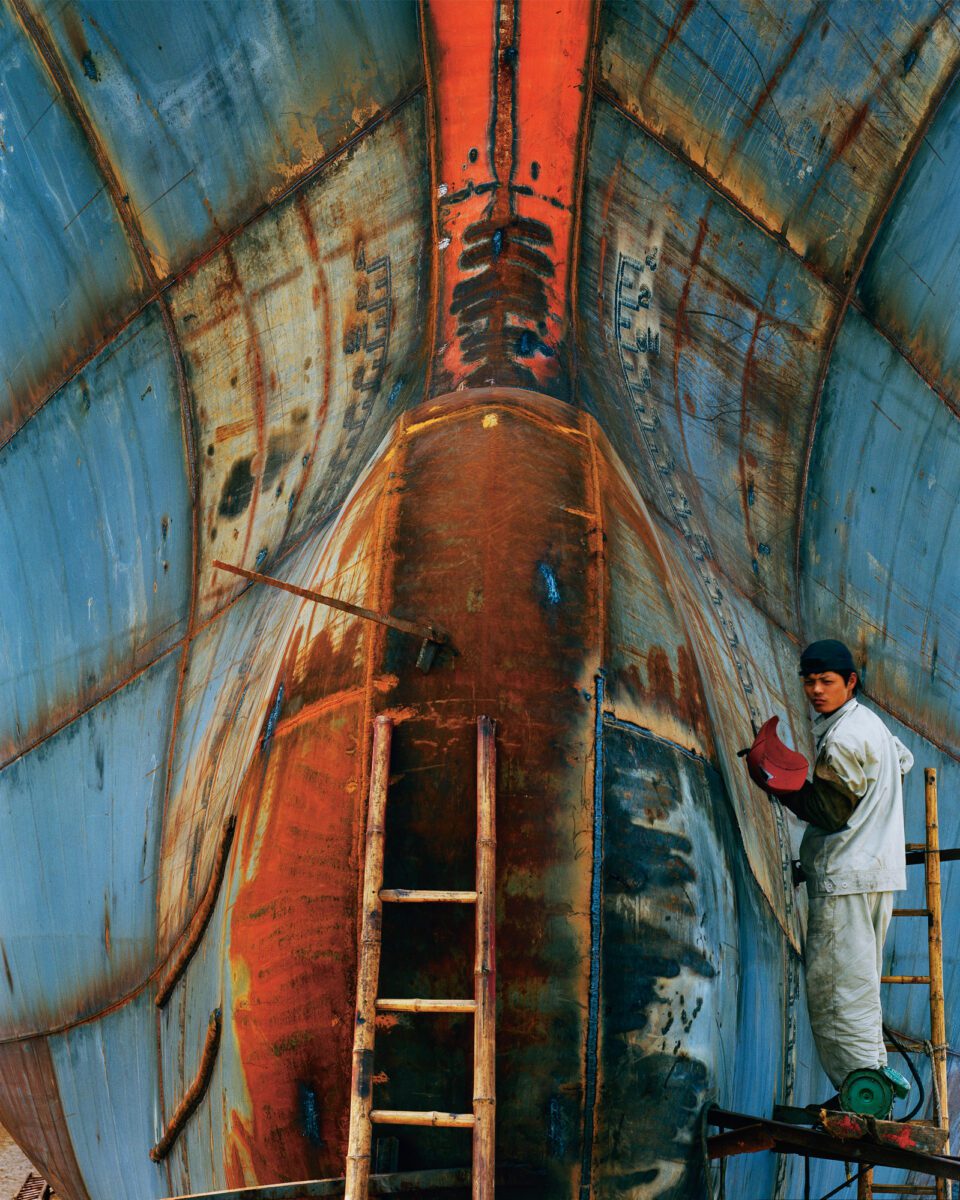
Visitors to ICP are taken from these early creations through four decades of work. The show highlights not only the scope of his talent, but also the depth, spotlighting the recurring themes that continue to occupy him. These thematic throughlines include the intertwining of fossil fuels and consumerism, global infrastructure, precarious labour conditions and the challenges of mass recycling. The series Tailings (1996) is devoted to the aftermath of metal mining and smelting. The photos reveal vividly red and orange rivers, cutting through dark and almost barren landscapes. Burtynsky’s critics have questioned whether his work aestheticises environmental degredation. However, in a recent interview with the Guardian, he refuted these claims: “I’m trying to find a visual language that has a painterly or surreal quality to it that shows the world we’ve evolved in a way that makes people engage with it.” It is true that his works walk the line of alarming and striking. They are intended to be an entry point to deeper enquiry into environmental activism, rather than offering a definitive stance. Another memorable example is a series taken in the Little Rann of Kitch in Gujarat, India. The region is home to more than 100,000 salt workers extracting around one million tons of salt from the floodwaters of the Arabian Sea each year. The aerial vantage point reveals multi-coloured interlocking rectangles. The natural shades of the salt pans contrast with the calligraphic tracks from vehicles, which are a reminder of the human influence on the landscape.
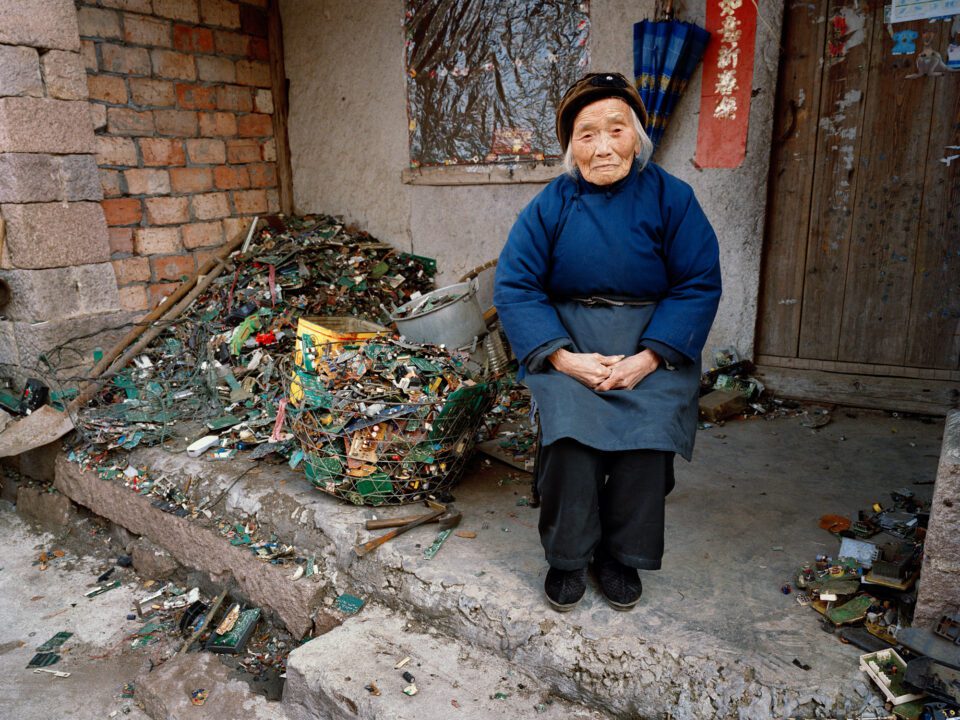
Burtynsky’s aerial photographs frequently capture a space where human presence cannot be seen, but is perennially felt. The shots are not about people, but about humanity’s impact on the world. This conspicuous absence raises one overriding question: what will be left after humanity is gone? It is particularly interesting that ICP’s exhibition includes rarely-seen portraits by the artist. These intimate moments offer a different perspective to his landscapes. The images were taken around the world, from factories in China to the shipbreaking coasts of Bangladesh, reminding viewers of the human reality behind his more removed works. It is often difficult to comprehend the scale of environmental damage: think the Great Pacific Garbage Patch, a plastic-filled stretch of ocean that is twice the size of France, or the 15 million “throwaway” fast fashion items that arrive in Ghana each year. Burtynsky’s portraits render them painfully visible. In one particularly arresting shot, an elderly woman in Zhejiang Province, China, sits on the front porch of her house, surrounded by piles of computer parts. She was 95 years old when she met Burtynsky, having witnessed the country’s explosion of industry and technology decades before. By the time the image was taken, she had found herself at the other end of that process – recycling motherboards shipped from the west to be broken down by hand.
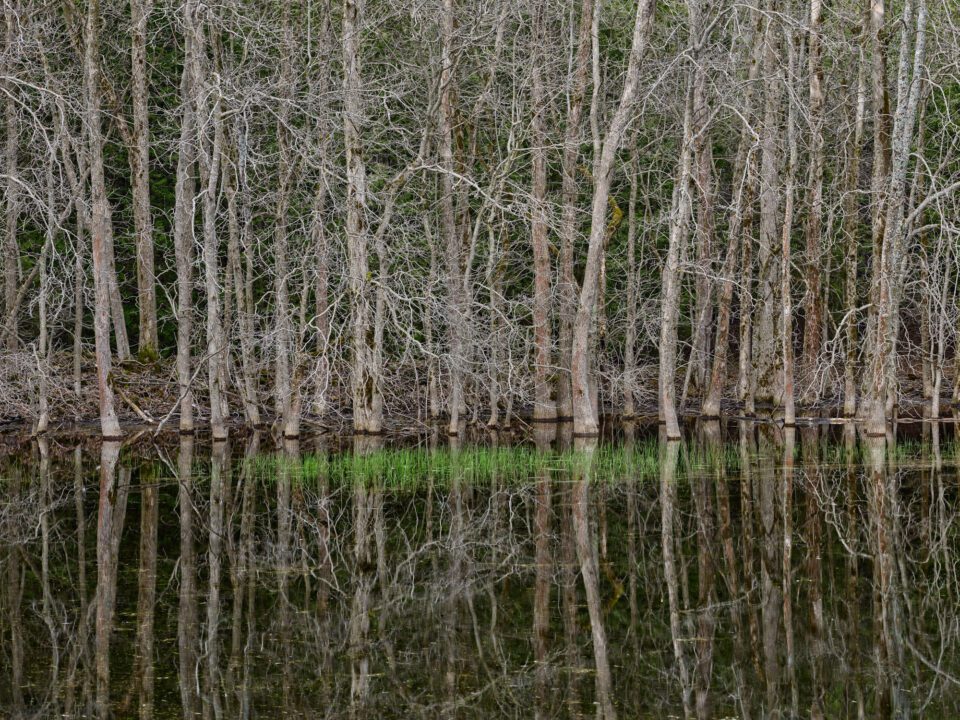
The Great Acceleration was intentionally scheduled to extend into Climate Week NYC which runs 21 – 28 September 2025. It brings together leaders in business, tech, politics and academia that have the means, scale and ideas to make bold advancements. ICP’s show offers visitors the chance to engage in climate activism in a different way, visualising the repercussions of action or, as is more often the case, inaction. It is part of the gallery’s commitment to presenting “concerned photography.” Burtynsky said: “ICP has long championed ‘concerned photography’ – imagery that informs and inspires action – which aligns deeply with my own practice. At such a critical moment in time, I hope this work sparks meaningful dialogue about our relationship with the planet and brings more people to this awareness.”
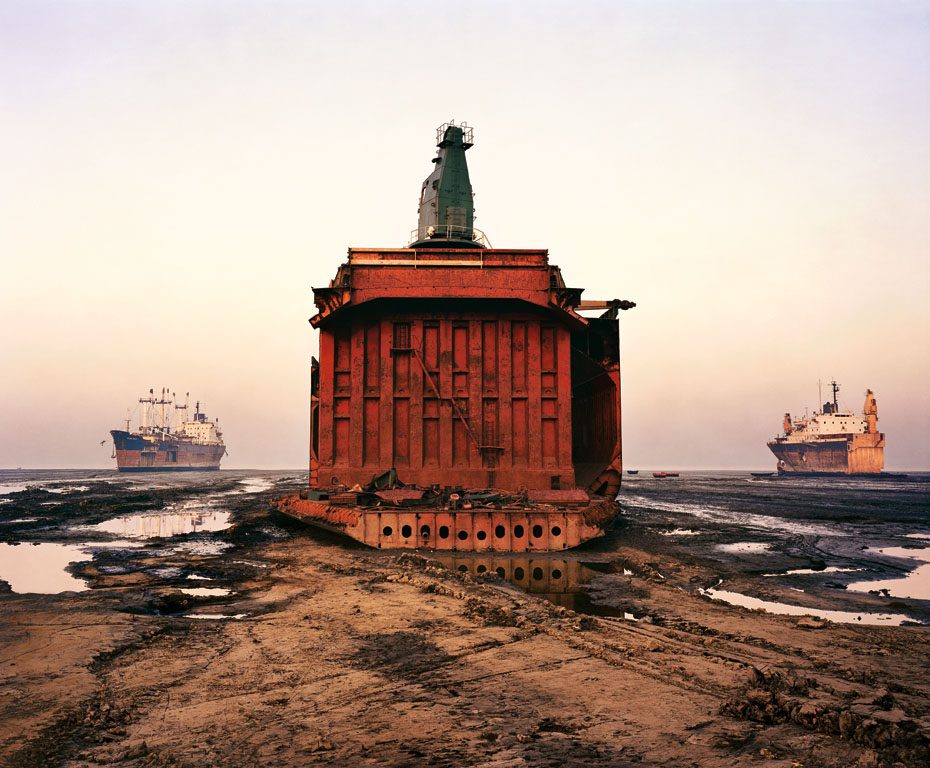
It is difficult to overstate Edward Burtynsky’s influence on contemporary environmental art. Regardless of whether his photographs are taken on the salt pans of India or the urban mines of North America, he speaks to a universal truth: humanity has had an indelible effect on the planet. ICP’s exhibition takes viewers from the macro to the micro, from sweeping vistas of an almost incomprehensible scale to a tender portrait of a single woman affected by throwaway culture. Together, they paint a harsh, but not altogether hopeless, view of modern life. Burtynsky is a master of his craft. In his hands, the camera is a powerful tool: driving home the damage human behaviour is doing to the Earth, and the beauty that can yet be preserved.
Edward Burtynsky: The Great Acceleration is at ICP, New York until 28 September: icp.org
Words: Emma Jacob
Image Credits:
1. Nickel Tailings #34, Sudbury, Ontario, Canada, 1996. Photos © Edward Burtynsky, courtesy Howard Greenberg Gallery, New York.
2. Mines #13, Inco – Abandoned Mine Shaft, Crean Hill Mine, Sudbury, Ontario, Canada, 1984. Photos © Edward Burtynsky, courtesy Howard Greenberg Gallery, New York.
3. Salt River Pima and Maricopa Indian Community, Suburb, Scottsdale Arizona, USA, 2011. Photos © Edward Burtynsky, courtesy Howard Greenberg Gallery, New York.
4. Shipyard #19, Qili Port, Zhejiang Province, China, 2005. Photos © Edward Burtynsky, courtesy Howard Greenberg Gallery, New York.
5. China Recycling #22, Portrait of a Woman in Blue Zebu, Zhejiang Province, China, 2004. Photos © Edward Burtynsky, courtesy Howard Greenberg Gallery, New York.
6. Natural Order #33, Grey County, Ontario, Canada, 2020. Photos © Edward Burtynsky, courtesy Howard Greenberg Gallery, New York.
7. Shipbreaking #49, Chittagong, Bangladesh, 2001. Photos © Edward Burtynsky, courtesy Howard Greenberg Gallery, New York.


